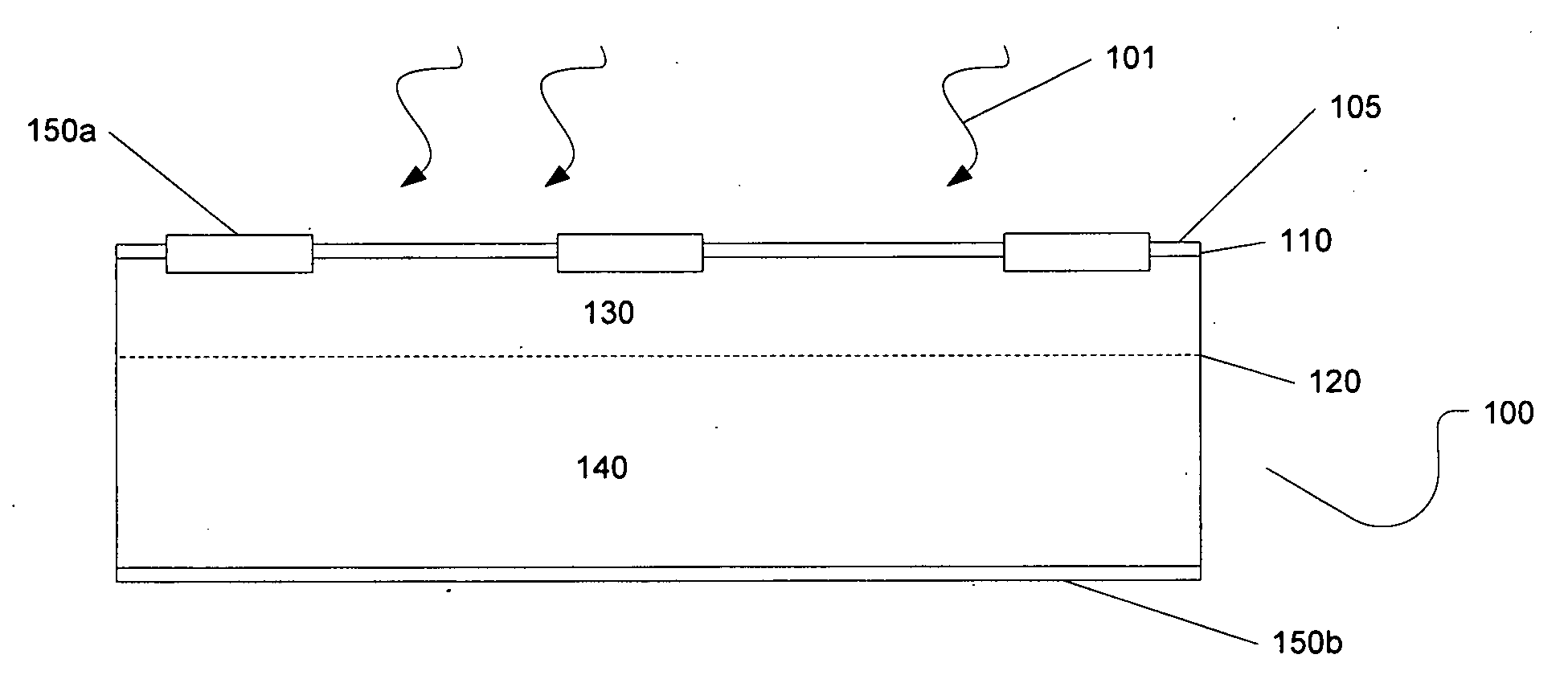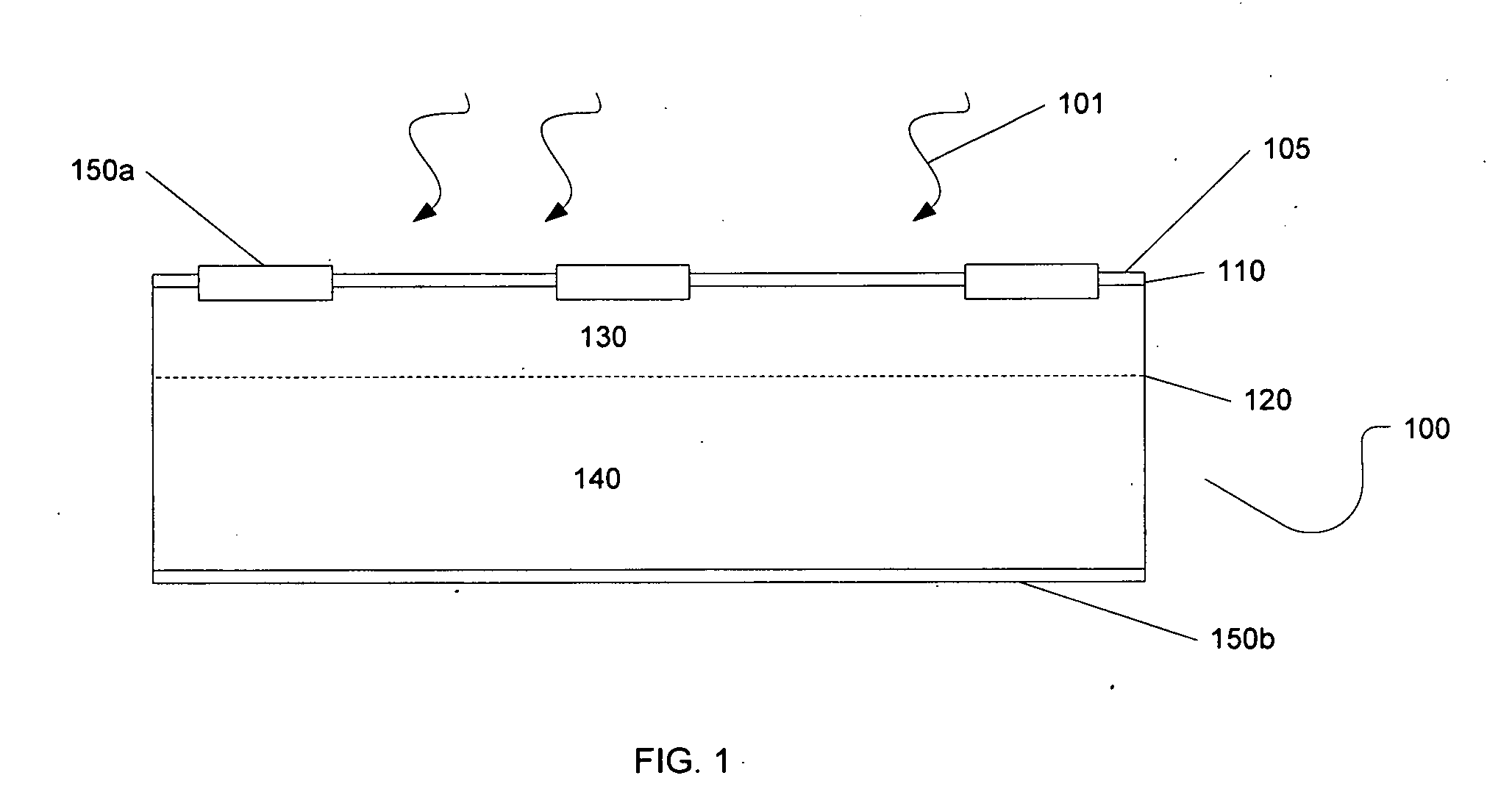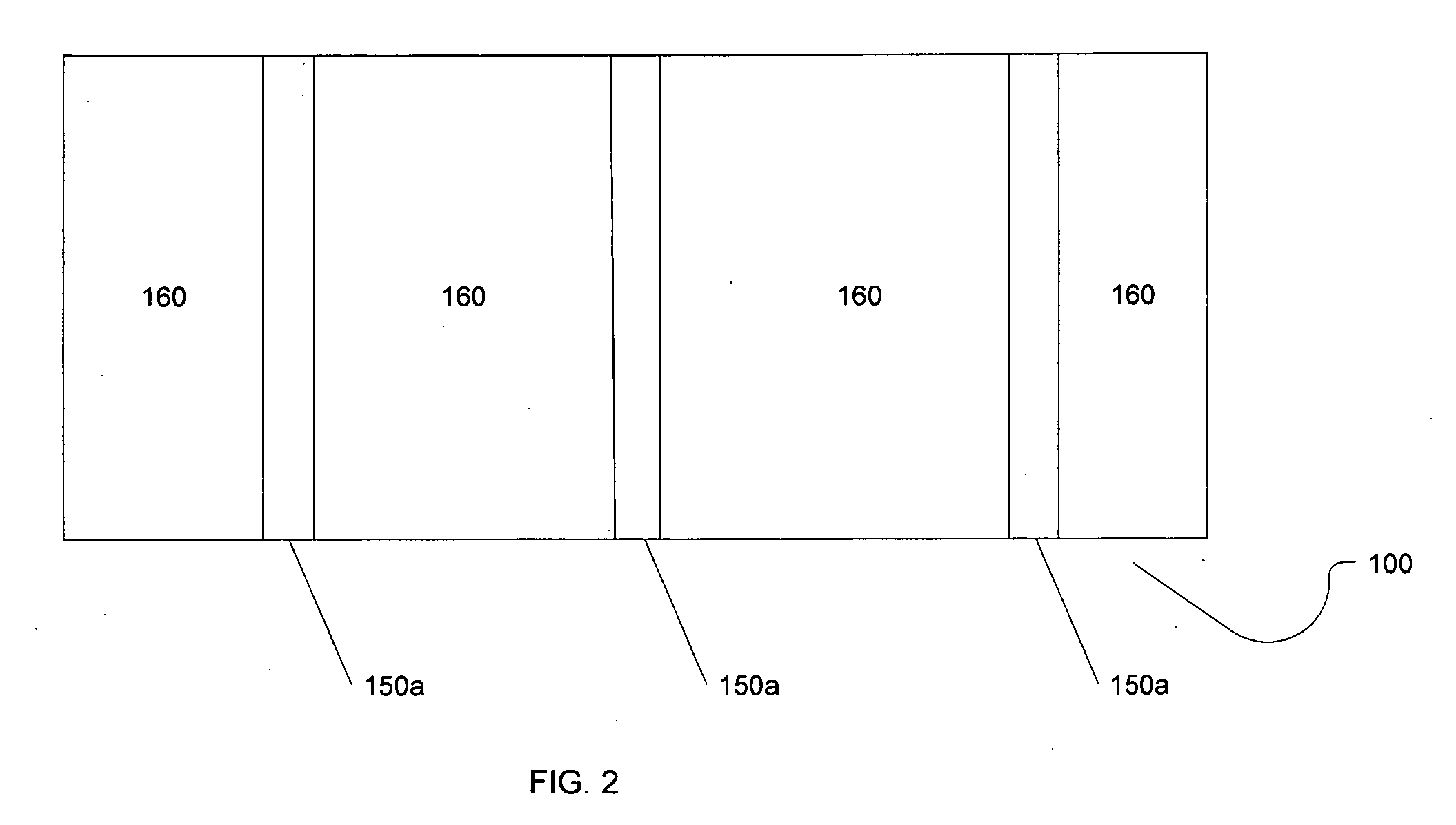Maskless Doping Technique for Solar Cells
- Summary
- Abstract
- Description
- Claims
- Application Information
AI Technical Summary
Benefits of technology
Problems solved by technology
Method used
Image
Examples
Embodiment Construction
[0030]As described above, solar cells utilizing selective emitter design are most advantageous, however the manufacturing process needed to create such cells can be cost prohibitive. By understanding the relative accuracy and requirements of the solar cell, it is possible to manufacture solar cells having a selective emitter design without the costly lithography and masking process steps.
[0031]FIG. 4 shows a top view of the solar cell manufactured using the methods of the present disclosure. The solar cell is formed on a semiconductor substrate 100. The substrate can be any convenient size, including but not limited to circular, rectangular, or square. Although not a requirement, it is preferable that the width of the substrate 100 be less than the width of the ion beam used to implant ions in the substrate 100. However, no such limitation exists with respect to the orthogonal direction of the substrate. In other words, a substrate 100 can be arbitrarily long, and can be in the shap...
PUM
 Login to View More
Login to View More Abstract
Description
Claims
Application Information
 Login to View More
Login to View More - R&D
- Intellectual Property
- Life Sciences
- Materials
- Tech Scout
- Unparalleled Data Quality
- Higher Quality Content
- 60% Fewer Hallucinations
Browse by: Latest US Patents, China's latest patents, Technical Efficacy Thesaurus, Application Domain, Technology Topic, Popular Technical Reports.
© 2025 PatSnap. All rights reserved.Legal|Privacy policy|Modern Slavery Act Transparency Statement|Sitemap|About US| Contact US: help@patsnap.com



